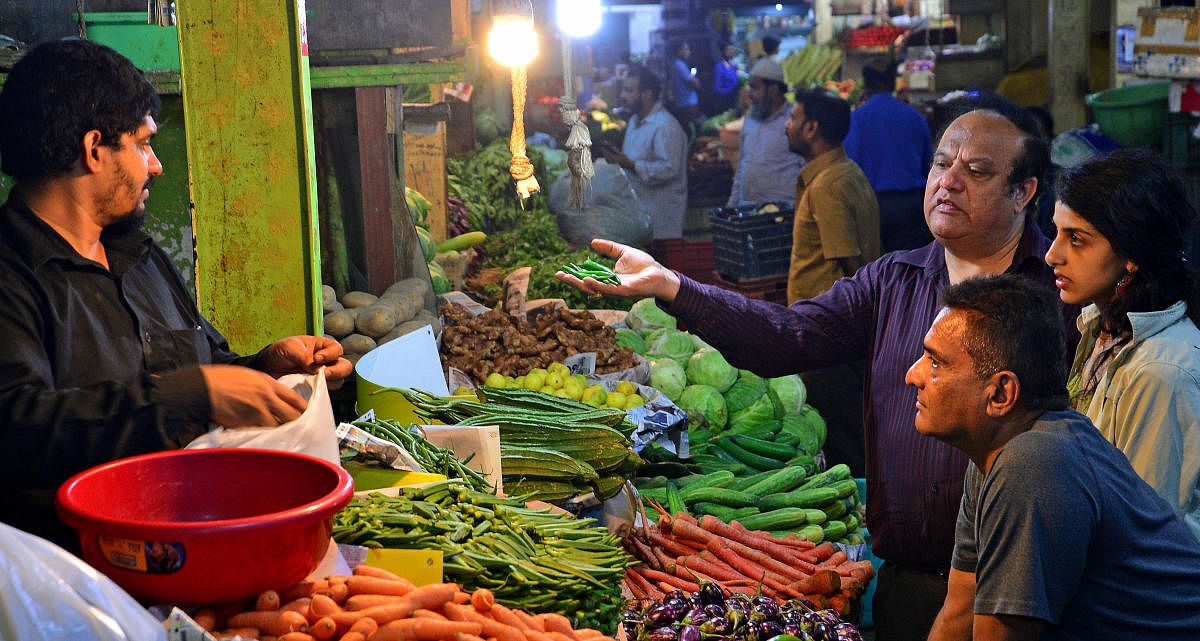Supermarkets may be cropping up in all corners of the city but 80% of Bengalureans still prefer to buy food materials from kirana shops, Hopcoms outlets and traditional markets.
A study by the Indian Institute of Human Settlements (IIHS) published last month stresses the need to consider the crucial role of the small-scale food sector in Bengaluru’s food system and the need to understand the organisation and functioning of these critical elements.
As part of a series of case studies entitled ‘Hungry Cities Report’, fellows from the IIHS surveyed 1,700 households from all economic backgrounds in 40 out of the 198 wards to understand the food and food-purchasing habits.
The data shows that most of the residents patronise more than one type of outlet in a diverse city where food materials are sold on diverse platforms. In the order of preference, 90% of the respondents said they frequently bought materials from kirana shops and 69% bought vegetables from carts while 40% patronised Hopcoms. Overall, 60% said they bought meat from small outlets and 64% said they frequented restaurants/cafes/bakeries.
“Every item on the list (bought in kirana stores) is available at supermarkets but they command no more than 20% of the market... Neither supermarkets nor small retail outlets have more than 50% of the market for any one product,” says the report by Jyothi Koduganti, Charrlotte Adelina, Mohanraju J S and Shriya Anand.
That personal connections and understandings play a key role in the purchasing behaviour was evident with half of the respondents “finding it problematic that supermarkets do not provide credit”. More than 40% found them too expensive. The perception that supermarkets do not stock the right food or are only for the wealthy also played a minor part.
The report builds on a 2017 study, in which the researchers noted that food consumption practices in Bengaluru “highlight the extent of stratification in the city on the lines of income”.
Shriya said the institute would build on the report’s findings to suggest policy interventions. “The role of the informal food vendors and markets in ensuring the city’s food security is obvious. Bringing them to the mainstream is important not only because of the livelihood rights but more importantly due to the major role they play in the city’s every-day life,” she said.
17% suffer food insecurity
Most of the households surveyed as part of the study were found to be food secure. The study asked respondents to rate the intensity of their food insecurity on a scale of 0 to 27. It was found that 13% were 'severely food insecure' while 'moderate' and 'mild' insecure constituted 2% each.
